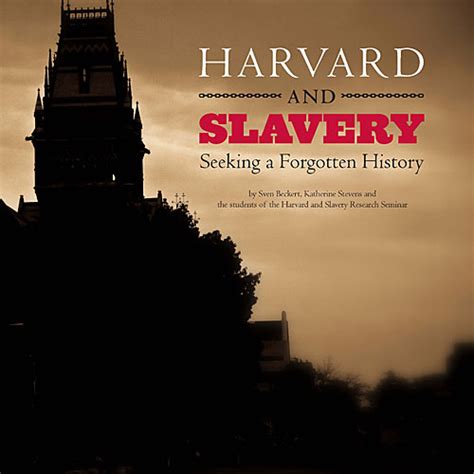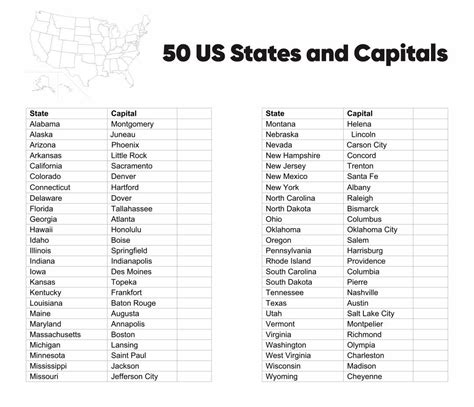
Harvard University’s ambitious effort to confront its historical ties to slavery has ignited controversy, raising questions about academic freedom and institutional accountability after the lead researcher, Cris Beam, alleges his contract was not renewed following his findings.
Cris Beam, a journalist and author hired by Harvard’s Radcliffe Institute for Advanced Study to investigate the university’s connections to slavery and its financial beneficiaries, claims his contract was terminated after he presented preliminary research that implicated prominent Harvard donors and revealed deeper-than-anticipated entanglements. Beam alleges that Harvard was uncomfortable with the extent of his findings, suggesting a conflict between the university’s stated commitment to transparency and its potential desire to protect its reputation and financial interests. Harvard denies these allegations, stating that Beam’s contract ended as scheduled and that the university remains dedicated to its ongoing slavery research initiative. This controversy has sparked a debate about the integrity of historical research conducted within institutions with vested interests.
The central point of contention revolves around the nature and scope of Beam’s research. He was tasked with delving into Harvard’s historical records to uncover the full extent of the university’s connections to slavery and the slave trade. According to Beam, his research uncovered that Harvard’s financial beneficiaries and early benefactors were deeply involved in the slave trade, profiting directly from the exploitation of enslaved people. Beam suggests that the university may have been hesitant to publicize these findings, particularly as they implicated individuals and families who continue to be significant donors to the institution.
“I believe that the reasons for not renewing my contract were directly related to the content of my research and that the university did not like what we found,” Beam stated in an interview. He elaborated that his research highlighted the extent to which Harvard’s wealth was built upon the profits of slavery, a finding he believes made the university uncomfortable.
Harvard, however, vehemently denies Beam’s claims. The university maintains that Beam’s contract was always intended to be temporary and that its non-renewal was a standard administrative decision unrelated to his research findings. In a statement, Harvard officials affirmed the university’s commitment to its slavery research initiative and asserted that it remains dedicated to transparency and historical accuracy. They stated that the university fully supports academic freedom and that research findings are not suppressed or influenced by donor relations.
This controversy has raised broader questions about the challenges of conducting historical research within institutions that have a vested interest in the narratives being uncovered. It highlights the potential for conflicts of interest when universities, which often rely on donations and alumni support, are tasked with examining their own problematic pasts. Critics argue that such research requires independent oversight and protection to ensure that findings are not suppressed or manipulated to protect the institution’s image.
The situation also underscores the growing scrutiny of universities and other institutions regarding their historical connections to slavery and racial injustice. In recent years, many institutions have launched initiatives to examine their pasts and address the legacies of slavery. However, these efforts have often been met with skepticism and criticism, particularly when the resulting research implicates prominent figures or reveals uncomfortable truths about the institution’s history.
The implications of this case extend beyond Harvard, potentially impacting the credibility of similar research initiatives at other universities. If researchers fear that their findings will be suppressed or that their jobs are at risk, it could discourage them from pursuing sensitive topics or lead them to self-censor their work. This could undermine the goal of achieving a more complete and accurate understanding of the past.
The controversy surrounding Beam’s research also raises questions about the role of universities in promoting social justice and reconciliation. If institutions are unwilling to fully confront their pasts, critics argue, they cannot effectively address the ongoing legacies of slavery and racial inequality. This requires a willingness to acknowledge and atone for past wrongs, even when doing so may be uncomfortable or challenging.
Furthermore, the case highlights the importance of transparency and accountability in historical research. Universities should ensure that their research initiatives are conducted independently and that findings are made public without undue influence or interference. This requires clear policies and procedures to protect academic freedom and prevent conflicts of interest.
The allegations made by Beam, whether accurate or not, have cast a shadow over Harvard’s efforts to grapple with its historical ties to slavery. The university now faces the challenge of addressing these allegations and reaffirming its commitment to transparency and academic freedom. This will require a careful and deliberate approach, including a thorough review of the circumstances surrounding Beam’s contract non-renewal and a clear articulation of its policies regarding research independence.
The situation also serves as a reminder of the ongoing need for critical examination of historical narratives and the importance of ensuring that all voices are heard. This includes the voices of those who have been marginalized and oppressed by slavery and its legacies. By confronting its past and acknowledging the suffering caused by slavery, Harvard has the opportunity to contribute to a more just and equitable future.
The issue has attracted significant attention from academics, historians, and social justice advocates, many of whom are calling for an independent investigation into the circumstances surrounding Beam’s departure. They argue that a thorough and impartial review is necessary to determine whether Harvard violated its commitment to academic freedom and whether Beam’s research was suppressed or unduly influenced.
The case also raises broader questions about the ethics of funding historical research. Should universities accept donations from individuals or families who have direct ties to slavery? And how can institutions ensure that their funding sources do not compromise the integrity of their research? These are complex and challenging questions that require careful consideration.
In the wake of this controversy, Harvard faces a critical moment. The university must demonstrate its commitment to transparency, academic freedom, and social justice by addressing the allegations made by Beam and taking concrete steps to ensure that its slavery research initiative is conducted with integrity and independence. Failure to do so could further damage the university’s reputation and undermine its efforts to address the legacies of slavery.
Harvard’s initial statement in response to the allegations emphasized its commitment to academic freedom and the importance of its ongoing slavery research. However, critics argue that the university’s response has been insufficient and that a more thorough and transparent investigation is needed. They contend that Harvard must provide clear evidence that Beam’s contract non-renewal was unrelated to his research findings and that the university remains committed to publishing all research results, regardless of their potential impact on the university’s reputation or financial interests.
The allegations made by Beam have also resonated with broader debates about institutional accountability and the role of universities in addressing historical injustices. Many activists and scholars argue that universities have a moral obligation to atone for their past involvement in slavery and to use their resources to support communities that have been harmed by its legacies. This includes providing scholarships and financial aid to descendants of enslaved people, investing in economic development in historically Black communities, and supporting research that examines the ongoing effects of slavery on contemporary society.
The controversy surrounding Beam’s research also highlights the challenges of reconciling historical truth with institutional interests. Universities, like other organizations, are often motivated by a desire to protect their reputation and financial interests. This can create conflicts of interest when those institutions are tasked with examining their own problematic pasts. Critics argue that it is essential to establish independent oversight mechanisms to ensure that historical research is conducted objectively and that findings are not suppressed or manipulated for political or financial reasons.
Ultimately, the case of Cris Beam and Harvard’s slavery research initiative serves as a cautionary tale about the complexities of conducting historical research within institutions with vested interests. It underscores the importance of transparency, academic freedom, and independent oversight in ensuring that historical narratives are accurate, complete, and not unduly influenced by political or financial considerations.
The university’s next steps are crucial in demonstrating its commitment to a full and transparent accounting of its past. This includes providing access to relevant documents and data, cooperating with any independent investigations, and engaging in open dialogue with students, faculty, alumni, and community members about the university’s historical ties to slavery. By taking these steps, Harvard can begin to rebuild trust and demonstrate its commitment to addressing the legacies of slavery.
The controversy has intensified calls for greater transparency from universities regarding their historical ties to slavery. Activists and scholars are urging institutions to release comprehensive records of their financial investments, land holdings, and other assets that may have been derived from the slave trade or the exploitation of enslaved people. They argue that this information is essential for understanding the full extent of universities’ involvement in slavery and for developing effective strategies for addressing its legacies.
The case also underscores the importance of supporting researchers who are willing to take on difficult and controversial topics. Universities should provide robust protections for academic freedom and ensure that researchers are not penalized for pursuing research that challenges established narratives or implicates powerful interests. This requires creating a culture of intellectual curiosity and open inquiry, where researchers feel safe to pursue their work without fear of reprisal.
In addition to examining their financial ties to slavery, universities should also consider how their curricula and academic programs perpetuate or challenge the legacies of slavery. This includes incorporating more diverse perspectives into the curriculum, promoting research on race and inequality, and supporting programs that address the educational and economic disparities that disproportionately affect communities of color.
The broader context of this controversy is the ongoing reckoning with racial injustice in the United States. The killing of George Floyd in 2020 sparked a national conversation about systemic racism and police brutality, leading many institutions to re-examine their own histories and practices. Universities, in particular, have come under increasing pressure to address their historical ties to slavery and to take concrete steps to promote racial equity and inclusion.
The case of Cris Beam and Harvard’s slavery research initiative is a microcosm of these broader challenges. It highlights the difficulty of reconciling historical truth with institutional interests and the importance of ensuring that research on sensitive topics is conducted with integrity and independence. Ultimately, the university’s response to this controversy will have significant implications for its reputation and its ability to contribute to a more just and equitable future.
The allegations have also triggered discussions about the ethical responsibilities of researchers when encountering potentially damaging information about their institutions. While academic freedom protects the right to conduct research without undue influence, it also raises questions about the balance between scholarly inquiry and the potential harm that research findings could inflict on individuals or institutions. These are complex ethical considerations that require careful deliberation and thoughtful judgment.
The controversy surrounding Beam’s research serves as a reminder that the process of confronting historical injustices is often fraught with challenges and complexities. There are no easy answers, and progress requires a willingness to engage in difficult conversations, to acknowledge uncomfortable truths, and to commit to meaningful action. Universities have a unique role to play in this process, and their efforts to address their historical ties to slavery can serve as a model for other institutions and organizations.
The case also underscores the importance of involving community members in the process of historical research. Universities should consult with descendants of enslaved people, community leaders, and other stakeholders to ensure that their research is informed by diverse perspectives and that its findings are used to benefit the communities that have been most harmed by slavery.
In the long term, the success of Harvard’s slavery research initiative will depend on its ability to build trust with the communities that have been most affected by slavery. This requires a commitment to transparency, accountability, and meaningful action. The university must demonstrate that it is truly committed to confronting its past and to using its resources to support a more just and equitable future.
FAQ Section:
1. What was Cris Beam hired to do at Harvard?
Cris Beam was hired by Harvard’s Radcliffe Institute for Advanced Study as a researcher to investigate and uncover the university’s historical connections to slavery and the financial benefits Harvard derived from it. According to the yahoo news report “Harvard Hired Researcher to Uncover Ties to Slavery. Then He Said, ‘They Didn’t Like What We Found.’”, Beam was contracted by Harvard to delve into the school’s past.
2. Why does Cris Beam believe his contract was not renewed?
Beam alleges that his contract was not renewed because his research findings revealed that prominent Harvard donors and the university itself benefited extensively from slavery, making the university uncomfortable. As Beam put it, “I believe that the reasons for not renewing my contract were directly related to the content of my research and that the university did not like what we found.”
3. What is Harvard’s response to Beam’s allegations?
Harvard denies Beam’s allegations, asserting that his contract was always intended to be temporary and its non-renewal was a standard administrative decision unrelated to his research findings. The university maintains its commitment to its slavery research initiative and to transparency and historical accuracy, emphasizing that it supports academic freedom and research findings are not suppressed.
4. What broader issues does this situation raise about universities researching their own histories?
This situation raises questions about the potential for conflicts of interest when universities investigate their own pasts, particularly when those investigations may implicate donors or reveal uncomfortable truths about the institution’s history. It highlights the importance of independent oversight and protection of academic freedom to ensure that research findings are not suppressed or manipulated.
5. What are the potential implications of this case for other universities engaged in similar research initiatives?
The case could impact the credibility of similar research initiatives at other universities if researchers fear their findings will be suppressed or their jobs are at risk. This could discourage researchers from pursuing sensitive topics or lead to self-censorship, undermining the goal of achieving a more complete and accurate understanding of the past. If this situation makes researchers fearful of publishing their findings, the truth will remain unexposed and potentially buried.









